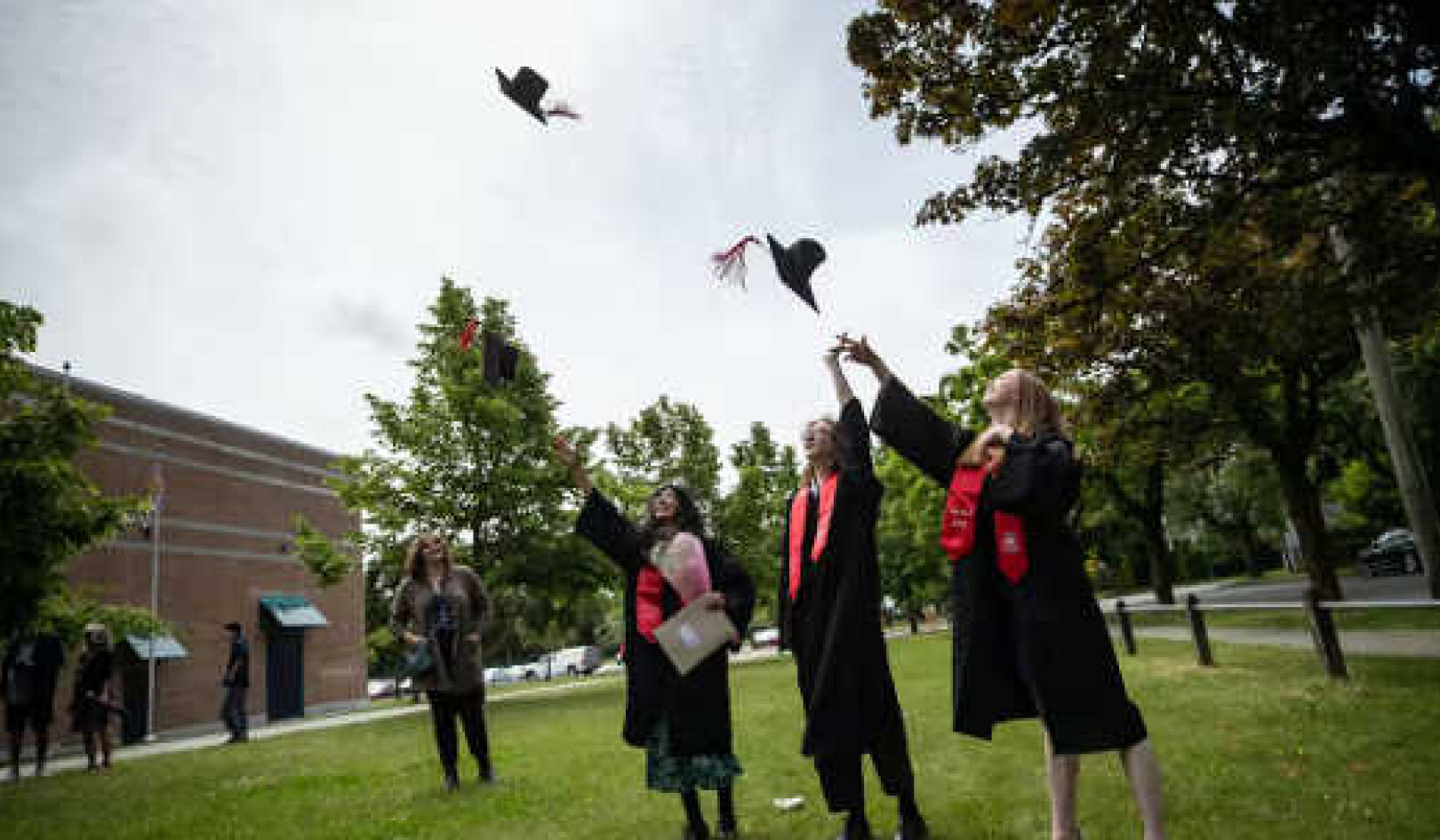
In This Article:
- Learn about an innovative program designed to break the cycle of poverty, hopelessness, and inadequate education.
- Discover how empowering the next generation can make the American dream attainable for all.
- Understand the importance of a common educational experience in uniting our nation.
- Explore how accessible education and economic resources can reshape the future of America.
- Find out how this plan can reduce youth crime, unemployment, and substance abuse.
How to Empower the American Dream for All
by Bernie J. Mullin.
Lack of educational attainment is responsible for holding many Americans back from achieving their full potential and living out the American dream, particularly by limiting the development of cognitive skills and making college inaccessible. This leads to low wages and often a life at or below the poverty line.
The feeling of being unable to participate in the good things our society has to offer then contributes to a sense of futility, a lack of hope for the future, and often, anger. These feelings can manifest themselves in mental health problems and irresponsible behavior, sometimes rising to the level of criminality.
Poverty and hopelessness then go on to create conditions that can make educational attainment difficult for the next generation, as well as ensuring that no financial equity is passed down from one generation to the next to provide a foundation for young people to build on.
And so the cycle repeats itself. Breaking the EPH cycle (education, poverty, hopelessness) will set America’s youth onto a hopeful path that leads to wealth and achievement thanks to a strong educational foundation. This will help heal the divisions in our nation and make the American dream attainable to all.
My American prescription outlined below targets each element in this cycle to ensure that every American child not only receives an adequate education but has all the tools required to make the best of that education. It seeks to break the cycle of poverty by giving every young American the opportunity to earn what were previously privileges reserved for the wealthy.
A core feature of my American prescription is the provision of a common experience for all American teenagers, a shared touchstone that will spread more understanding and mutual respect across our nation. It is an investment in the future of our entire country that will ultimately have an enormous impact on all segments of the population.
1. The American Prescription: Preschool
High-quality preschool programs prepare children for the start of their formal education, ensuring that they enter kindergarten with all the cognitive tools to take advantage of the educational opportunities that are offered. A good preschool education provides significant and lasting benefits to children that they will carry with them for the rest of their lives. Research on the effectiveness of preschools has found that early childhood education correlates with improved health and a reduction in depression.
In terms of educational outcomes, preschool is associated with increased high-school graduation rates and a nearly 20 percent increase in the likelihood of college attendance. Preschool programs can have a particularly high impact on children from low-income families, closing the attainment gap with their wealthier peers and improving conditions at home by freeing up parents during the workday. One recent study found that expanding preschool provision could reduce child poverty by as much as 12 percent simply by providing parents with more flexibility regarding their working hours.3
This American prescription advocates the provision of free preschool for all children from the age of three months through to kindergarten entry at age five. This will be achieved through granting Head Start providers an annual allowance of $15,000 per child for each year of preschool age.
2. The American Prescription: Elementary and Middle School
At present, one in five children across the United States spends time alone after the end of the school day. This is particularly common for children in low-income families with a single parent or two working parents, as after school supervision is not compatible with the normal working hours of most jobs. In order to fully participate in the workforce, parents are frequently forced to compromise when it comes to child care, leading to additional disadvantages for children who may already face other issues that impede educational outcomes.
Decades of research are consistent in showing a broad range of positive outcomes for children who attend high-quality after-school programs instead of being left unsupervised. In particular, a large study following 3000 elementary- and middle-school children from low-income families found very significant improvements in math test results, improved work habits, improved social skills, and significant reductions in school misconduct, aggressive behavior with peers, and drug and alcohol use.5,6,7
The American prescription recommends the provision of free after-school programs for all elementary and middle school children across the nation to ensure that the resources spent on educating our youth deliver the greatest possible impact.
3. The American Prescription: High School
The preschool and elementary/middle school elements of this American prescription focus on providing children with the tools they will need to maximize their educational outcomes. The high-school component of the prescription adds a unique and innovative four-year program that has three core goals:
-
Prepare young people to be functional, contributing members of society with an understanding of American civic values and a positive attitude toward their national and local communities.
-
Provide young people with the opportunity to save up to $25,000 through a summer work program, enabling them to enter the adult world with the kind of resources normally reserved for those who are fortunate enough to be born into a wealthy family.
-
Provide young people with the opportunity to earn free college tuition to ensure that no American child sees college as an unaffordable dream.
The importance of earning the way to these latter two outcomes is essential. This program is not designed to offer handouts. Its goal is to instill a sense of purpose and an understanding that there is something more important than the individual, while offering an opportunity to build up a nest egg by carrying out paid work that is compensated fairly. In return for voluntarily completing the full, four-year program, the young person earns vouchers to cover four years of college tuition or other professional training. The embedding of values, a work ethic, and an aspirational attitude combine with access to college and a solid financial start in life to ensure that the American dream is attainable by everyone who is willing to grasp it.
3.1 The American Experience Summer Camp
In the summer before high school, all rising freshmen will be encouraged to attend an eight-week sleep-away summer camp. Camps will be based in mothballed former military and governmental facilities and will provide America’s children with a common point of reference: a shared American experience.
The educational program will follow in the great American summer-camp tradition of encouraging independence and physical activity, while introducing teens to peers from many different backgrounds and parts of the country. The camp ethos will be centered on the key values of self-reliance, self-respect, and civic and social responsibility. Practical classes will teach skills such as identifying and cooking healthy foods, financial planning, and media analysis and criticism, while students will also learn about the benefits of healthy eating, cardiovascular exercise, and mental relaxation. The program each day will include physical exercise and stretching for all students at a level appropriate to their individual fitness. Interactive sessions and seminars will focus on topics such as mutual respect, listening to understand, conflict resolution, and the importance of diversity, while civics classes will teach the history of America’s great institutions, how business works in a free-market society, and what responsibilities we each have to our ourselves and our nation.
Team-building exercises and tough physical and mental challenges will help build self-respect and respect for others, as well as providing opportunities to develop leadership skills. The program will also have the additional advantage of taking all American youth out of their immediate neighborhoods at the time they are most vulnerable to being drawn into antisocial or gang-related behavior, disrupting potentially dangerous patterns.
All attending students will receive the recommended minimum wage of $15 an hour for their participation in socially constructive educational courses, to the value of $600 per week for eight weeks (total compensation of $4,800 per student). This money will be paid into a special class of government- and bank-sponsored bank accounts, with students and their parents permitted to select their preferred financial institution.
3.2 The American Experience Summer Work Program
Each summer thereafter, preceding the start of their sophomore, junior and senior years, students will be supported in finding a paid eight-week work placement in the public, private, or volunteer sector. Options will include community service programs, courses organized by The Junior Reserve Officers’ Training Corps (JROTC) or other youth organizations, and work in the government or commercial sectors. At least one placement in a business environment across the three years will be required.
Students will have the option of finding a position for themselves or securing one through a government agency or charity. These work placements will give students an opportunity to build their resume, gain insight into careers that interest them, and gain invaluable experience for later life. All participating students will again receive the minimum wage for this program, paid into their American Experience bank account.
3.3 The American Experience Bank Account
All earnings from each year’s summer program will be shielded from deductions in the same way as 401k contributions and will be paid into a special bank account sponsored jointly by the government and participating FDIC-insured banks. Students will have the option to withdraw up to 20 percent of their earnings from each year while retaining the tax and interest benefits of the account. The remaining 80 percent will remain inaccessible until graduation from high school.
American Experience bank accounts will offer generous interest rates for accumulated savings to encourage students to leave the largest amount possible in the account until graduation. This will both maximize the value of the nest egg available on entering adulthood and encourage a healthy understanding of the value of budgeting and saving.
3.4 The American Dream College Fund
In order to ensure that no young American should be deterred from college by the expense involved or by concerns over future debt, every student who graduates from high school and completes the entire four-year American Experience program will have access to the American Experience college/professional education fund. This will come in the form of vouchers to cover up to four years of college tuition or professional training costing up to $15,000 per year. The student will be required to draw the full amount for educational purposes prior to reaching age twenty-five.
Conclusion
The economic costs and dollar figures are significant. However, much of this investment will recycle through the economy and come back into our national coffers through taxation, increased employment, and spending across many sectors. Some benefits are impossible to calculate, but increased educational attainment and more college graduates will provide important resources for the further development of our technology sector. The social benefits, such as reductions in unemployment, substance abuse, youth crime, and teen pregnancies, meanwhile, will be priceless.
The immediate payoff will be a generation of Americans who are better educated, have more hope, are more engaged with their communities, more committed to our national values and more enthusiastic about all the positive features of life in this great country. In the longer term, those who pass through this program will carry what they have learned with them, reshaping attitudes in the workforce more broadly and passing their own values down to their children.
The result will be a broad increase in the number of Americans who are able to live out the American dream, pursuing happiness for themselves and their families as part of a reunited national community.
Copyright 2024. All Rights Reserved.
Article Source:
BOOK: Reimagining America's Dream
Reimagining America's Dream: Making It Attainable for All
by Bernie J. Mullin.
 When Bernie J. Mullin first arrived in the United States in the 1970s, he saw his new home as a land of unrivaled opportunity. In the fifty years since, he has embraced everything that America has to offer. Bernie’s American journey has seen him rise from college student to pioneer of a new academic discipline, and from small business owner to senior roles at some of America’s most beloved sports institutions. But as his own star rose, Bernie watched in alarm as the ties that bind America together began to come loose. Reimagining America’s Dream is his prescription for the fever that is pulling America apart.
When Bernie J. Mullin first arrived in the United States in the 1970s, he saw his new home as a land of unrivaled opportunity. In the fifty years since, he has embraced everything that America has to offer. Bernie’s American journey has seen him rise from college student to pioneer of a new academic discipline, and from small business owner to senior roles at some of America’s most beloved sports institutions. But as his own star rose, Bernie watched in alarm as the ties that bind America together began to come loose. Reimagining America’s Dream is his prescription for the fever that is pulling America apart.
This book shows that the American dream has become increasingly unattainable for many of this country’s citizens. And as that dream fades, so the fabric of our nation begins to fray. To grasp the promise of an ever-more perfect union, we need a common purpose. Reimagining America’s Dream maps a path forward for our nation. It offers a prescription for our current ills and a positive vision for a future in which every American can realize the fruits of their talents and labor. It shows how we can make the American dream attainable for all
For more info and/or to order this book, click here. Also available as a Kindle edition.
About the Author
 Dr Bernie Mullin is a groundbreaking sport and entertainment industry executive who's turned around franchises, set all-time revenue and attendance records, and generated $1.5+ billion in revenues for brands from the NFL to the US Open Tennis with his agency, The Aspire Sport Marketing Group. He was CEO of NBA and NHL teams and CMO of the NBA. He's also a globally acclaimed speaker, podcaster, author, and humanitarian who has served on multiple boards, including the United Way; YMCA; and Make a Wish Foundation. His The Aspire Difference Foundation (TADF) focuses on supporting single parents with preschool children. All net proceeds from his consulting, podcasts and books go to support TADF. His new book is Reimagining America’s Dream: Making It Attainable for All.
Dr Bernie Mullin is a groundbreaking sport and entertainment industry executive who's turned around franchises, set all-time revenue and attendance records, and generated $1.5+ billion in revenues for brands from the NFL to the US Open Tennis with his agency, The Aspire Sport Marketing Group. He was CEO of NBA and NHL teams and CMO of the NBA. He's also a globally acclaimed speaker, podcaster, author, and humanitarian who has served on multiple boards, including the United Way; YMCA; and Make a Wish Foundation. His The Aspire Difference Foundation (TADF) focuses on supporting single parents with preschool children. All net proceeds from his consulting, podcasts and books go to support TADF. His new book is Reimagining America’s Dream: Making It Attainable for All.
Article Recap:
This article presents a comprehensive plan to empower the American dream by addressing the root causes of poverty, hopelessness, and inadequate education. The proposed American prescription offers solutions at every stage of a young person’s development, from preschool through high school, ensuring that every child has access to quality education, economic resources, and a shared national experience. By breaking the EPH cycle and fostering unity, this program aims to make the American dream attainable for all.


























